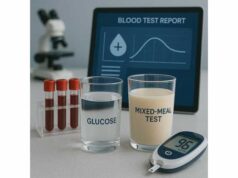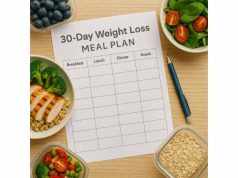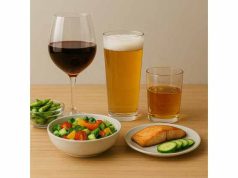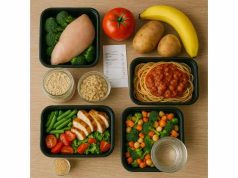
Counting macros is not about perfection—it is about clarity. When you know how much protein, carbohydrate, and fat you need, you can build meals that keep you full, fuel your day, and still create the calorie deficit required for fat loss. This guide gives you a precise, step-by-step way to set your numbers and adjust them as your routine changes. We will cover practical ranges, daily examples, and the most common mistakes to avoid. If you want a quick refresher on setting calorie targets and aligning macros with your goals, start with our overview of calorie goals and meal planning, then return here to turn those numbers into a macro plan you can repeat.
Table of Contents
- Do macros matter for fat loss?
- How to set your macros
- Protein: grams per day
- Carbs: how much and when
- Fat intake for satiety
- Build your day with macros
- Troubleshooting and adjustments
- Frequently Asked Questions
Do macros matter for fat loss?
Short answer: calories control weight change; macros control how you feel and perform while losing weight. The right combination makes a calorie deficit easier to maintain because meals are more filling, energy is steadier, and muscle is preserved.
What “best ratio” really means
No universal macro split wins for everyone. “Best” depends on your protein needs, activity, food preferences, and health conditions. For most adults aiming to cut body fat while protecting lean tissue, the plan starts with protein, then personalizes carbs and fats.
Why protein comes first
- Satiety: Higher protein meals reduce hunger between meals.
- Muscle retention: Adequate protein plus resistance training preserves lean mass, which supports long-term weight maintenance.
- Thermic effect: Protein requires more energy to digest than carbs or fat—useful, though not a primary driver of fat loss.
How carbs and fats share the rest
- Carbohydrates support training quality, steps, and cognitive work. They are especially helpful if you lift weights, run, cycle, or play sports.
- Fats provide essential fatty acids and help absorb fat-soluble vitamins. They also make food satisfying—but are calorie-dense and easy to overpour.
A good starting zone (pick a lane and adjust)
- Higher-protein, moderate-carb, moderate-fat:
30–35% protein, 35–45% carbs, 20–30% fat. Works well for mixed training weeks and desk jobs with regular workouts. - Higher-protein, higher-carb (athlete bias):
25–30% protein, 45–55% carbs, 20–25% fat. Useful when training volume is high. - Higher-protein, lower-carb (preference or lower activity):
30–35% protein, 25–35% carbs, 30–40% fat. Choose this if you simply prefer lower-carb foods and feel good eating this way.
These are starting ranges, not rigid rules. You will test, track, and adjust every 2 weeks. For a quick refresher on safe pacing and behavior change before you start, skim our guide to safe fat-loss basics.
What success looks like
- You hit protein almost without thinking.
- You are not ravenous at night.
- Workouts feel supported, not sluggish.
- Your 14-day weight average trends down at a sustainable pace.
How to set your macros
You will set calories first, then assign grams to each macro. Use this four-step method once, then fine-tune.
Step 1 — Choose a calorie target
Estimate maintenance (TDEE) with a calculator or by multiplying your body weight (in lb) by 13–16 depending on activity (13 = low activity; 16 = very active). Create a modest deficit of 300–500 calories/day for sustainable loss. If you need a walkthrough, see our guide to choosing a calorie target.
Step 2 — Set protein (grams, not %)
Use 1.6–2.2 g/kg of goal body weight (0.7–1.0 g/lb). Choose the lower end if you are smaller or untrained, the higher end if you are lean, older, or training hard. Convert grams to calories by multiplying by 4.
Step 3 — Set minimum fat
Use 0.6–0.8 g/kg of goal body weight (≈0.27–0.36 g/lb) as a floor to support hormones, fat-soluble vitamin absorption, and meal satisfaction. Multiply grams by 9 for calories. You can go higher if you prefer fatty foods and lower-carb meals.
Step 4 — Carbs fill the remainder
Carb calories = total calories − (protein calories + fat calories). Divide by 4 to get carb grams. Adjust carbs up on heavy training days and down on rest days if you like.
Worked example (80 kg adult, mixed training)
- Calorie target: 2,200/day.
- Protein: 1.8 g/kg → 144 g (≈ 576 kcal).
- Fat: 0.7 g/kg → 56 g (≈ 504 kcal).
- Carbs: 2,200 − (576 + 504) = 1,120 kcal → 280 g.
Alternate splits using the same calories
- Higher-carb training block: Fat 45 g (405 kcal) → Carbs 2,200 − (576 + 405) = 1,219 kcal → ~305 g.
- Lower-carb preference: Fat 75 g (675 kcal) → Carbs 2,200 − (576 + 675) = 949 kcal → ~237 g.
Distribute across meals
- 3 meals + 1 snack? Aim for 25–40 g protein per meal and 10–25 g at snacks.
- Place carbs near training for performance and recovery; keep vegetables and some carbs at lunch to avoid afternoon energy dips.
Hand-portion method if you dislike tracking
- Protein: 1–2 palms per meal
- Carbs: 1 cupped hand (women) or 1–2 (men) per meal
- Fats: 1 thumb (women) or 1–2 (men) per meal
- Vegetables: 2 fists per meal
Track your 14-day average weight and how you feel. If weight stalls and hunger is low, your calories may be higher than needed; if hunger is high and workouts suffer, adjust carbs or meal timing first, not protein.
Protein: grams per day
Protein is the macro that shapes how easy your cut feels. It controls appetite, protects muscle, and supports recovery. For weight loss, set protein by grams per kilogram of goal body weight, not by percentages.
Daily target
- 1.6–2.2 g/kg of goal body weight (0.7–1.0 g/lb) suits most adults.
- Higher end if you are leaner, older, or in a steep deficit; lower end if you are larger or untrained.
Meal distribution matters
Hitting 130–180 g “somewhere in the day” is not the same as spreading it out. Target 3–5 eating occasions with 25–40 g each to help muscle protein synthesis and curb late-night grazing.
Practical ways to hit your number
- Breakfast (choose one):
- 3 eggs + Greek yogurt (¼ cup)
- 1 cup skyr + 30 g muesli + berries
- Tofu scramble (200 g) with vegetables
- Lunch/Dinner (anchor with):
- Chicken breast or thigh (120–170 g cooked)
- Salmon or white fish (150–200 g cooked)
- Lean ground turkey (150 g cooked)
- Lentils/beans + tofu or yogurt (if you include dairy) to reach 30–40 g
- Snacks (10–25 g):
- Greek yogurt, cottage cheese, skyr
- Eggs, edamame, jerky, tinned fish
Quality and variety
Mix animal and plant proteins for nutrients and flexibility. If you rely on plants, combine legumes, soy foods, and higher-protein grains (like quinoa) to reach your per-meal targets.
Common pitfalls
- Low-protein breakfasts lead to afternoon hunger. Fix with eggs, skyr, or tofu.
- “Protein with fat” confusion: salmon and steak are great but count their fat toward your daily total; reduce added oils at those meals.
- Snack creep: protein bars can be useful but often add calories without much volume. Prefer yogurt, edamame, or eggs.
For a deeper dive into setting protein by body weight and lifestyle, review our focused guide to daily protein targets.
Carbs: how much and when
Carbohydrates are your most adjustable macro. They help you train hard, walk more, and think clearly—but they can also crowd out protein and vegetables if portions drift. The “best” carb intake depends on training volume, personal preference, and tolerance.
Starting ranges (use with your protein and fat)
- Lower activity or preference for lower-carb: 1–3 g/kg/day
- Mixed training (3–5 hrs/week): 3–5 g/kg/day
- Endurance or high volume (>6 hrs/week): 5–7+ g/kg/day
Timing lever
- Place most carbs in the meals around training (pre/post).
- On rest days, keep carbs steady but shift more toward vegetables, fruit, and legumes for fiber and micronutrients.
What carbs to choose most often
- Whole grains: oats, brown rice, quinoa, whole-wheat pasta, barley, farro
- Starchy veg: potatoes, sweet potatoes, squash, beets
- Beans and lentils: double as protein helpers
- Fruit: especially berries and citrus for volume and nutrients
Portion guides
- Per meal: 1 cupped hand (women) or 1–2 (men) of cooked grains or starchy veg.
- Fruit: one fist or a cupped hand of berries.
- Vegetables: 2 fists—these provide carbs too, mostly from fiber and water.
Signs your carbs are too low
- Workouts feel flat; heart rate spikes early.
- You crave quick sweets late in the day.
- Sleep quality drops.
Raise carbs by 15–30 g around training and monitor performance and appetite.
Signs your carbs are too high
- You hit protein but calories still creep up.
- You feel sleepy after lunch.
Trim ½ cupped hand at dinner first, then reassess in two weeks.
If you want a simple daily target by food type and examples that match your activity, open our primer on how many carbs per day and plug those ranges into your plan.
Fat intake for satiety
Dietary fat keeps meals satisfying and supports hormones, cell membranes, and vitamin absorption. It is essential—but calorie-dense—so portion control matters.
Daily floor (do not dip below)
Use 0.6–0.8 g/kg of goal body weight. This maintains nutrition and satisfaction. From there, lift fats higher if you prefer lower-carb eating, or reduce slightly if you feel better with more carbs.
Food choices most of the time
- Monounsaturated: olive oil, olives, avocado
- Polyunsaturated: nuts, seeds, fatty fish (also provide omega-3s)
- Saturated: enjoy in measured amounts via dairy, coconut, and fattier cuts
Portion cues
- Cooking oil: 1–2 teaspoons per person per meal (measure; don’t free-pour).
- Nuts and seeds: 10–20 g (a small handful or 1 tbsp seeds).
- Avocado: ¼–½ fruit as the fat for a meal.
- Cheese: 1–2 tbsp grated or matchbox-size if included in your pattern.
Where fat hides
- Dressings, pesto, nut butters, pan sauces, and “healthy” snack packs. Pre-portion once to avoid accidental surpluses.
Adjusting fat when you hit a stall
- First cut 1 teaspoon of oil at two meals (≈80–90 calories/day).
- If needed, reduce nuts by 5–10 g per day.
- Keep protein steady; replace lost food volume with vegetables or broth-based soups.
For detailed ranges and how fat supports fullness and health, see our quick guide to choosing a daily fat target.
Build your day with macros
Turn numbers into plates you can cook in minutes. The simplest way is to repeat 3–5 meal templates that hit your protein target and use measured carbs and fats.
Breakfast (25–40 g protein)
- Yogurt bowl: 1 cup Greek yogurt/skyr + berries + 1–2 tbsp muesli + 1 tsp nuts.
- Eggs and greens: 2–3 eggs + 2 cups vegetables sautéed in 1 tsp olive oil + small potato.
- Tofu scramble: 200 g tofu + mushrooms/spinach + salsa; 1 small whole-grain tortilla if included in your plan.
Lunch bowls (30–40 g protein)
- Mediterranean: chicken, quinoa, roasted peppers/onions, cucumber, olives, 1 tbsp vinaigrette.
- Tex-Mex: turkey or tofu, brown rice, black beans, lettuce, pico de gallo, avocado (¼).
- Seafood: canned tuna or salmon, farro, mixed vegetables, lemon-tahini sauce.
Dinners (30–40 g protein)
- Sheet-pan: salmon + potatoes + broccoli with 1 tsp olive oil.
- Stir-fry: lean beef or tempeh + mixed veg + rice; finish with soy/coconut aminos.
- Soup and salad: bean-and-veg soup with a chicken or tofu salad; whole-grain roll if desired.
Snack structure (10–25 g protein)
- Greek yogurt + fruit, edamame, cottage cheese + cucumber, or eggs + carrot sticks.
Timing and training
- Place carbs pre- and post-workout (fruit or potatoes/rice).
- Keep protein even across the day.
- Late-night hunger? Move 5–10 g protein from midday into a structured evening snack.
“Macro math” without the app
- Per meal, aim for a palm of protein, a cupped hand of carbs, 2 fists of vegetables, and a thumb of fats.
- Repeat favorite templates. If your two-week average weight stalls, adjust oil and starch portions before changing the whole menu.
For plug-and-play weekly templates that match a higher-protein approach, explore our practical 7-day meal plan ideas and adapt them to your macro numbers.
Troubleshooting and adjustments
Even a solid macro plan needs tuning. Use these signals and responses to stay on track without guesswork.
Problem: Weight trend stalls for 14+ days
Fix:
- Confirm adherence: are you within ±100–150 calories most days?
- Trim 1 tsp oil at two meals or reduce dinner carbs by ½ cupped hand.
- Keep protein constant; replace lost calories with vegetables for volume.
Problem: Always hungry between meals
Fix:
- Raise per-meal protein by 5–10 g.
- Add a fist of vegetables or ½ cup beans/lentils to lunch.
- Check breakfast: low-protein mornings often create evening overeating.
Problem: Workouts feel flat
Fix:
- Shift 15–30 g carbs to the meal before and after training.
- Keep sodium and fluids adequate, especially in hot weather.
- Do not cut protein to make room—adjust carbs/fats first.
Problem: Digestive discomfort after raising protein
Fix:
- Distribute protein more evenly.
- Choose a mix of sources (fish, eggs, tofu, dairy if tolerated).
- Increase fluids and fiber gradually.
Who should personalize more or get medical guidance
- Kidney disease: Protein targets are individualized—follow your clinician’s advice.
- Diabetes or insulin resistance: Carbs should focus on high-fiber sources with measured portions; pair with protein and fats.
- Pregnancy/breastfeeding: Weight loss is not usually advised; prioritize nourishment.
- Gout or hyperlipidemia: Watch purine-rich meats and saturated fat; favor fish, plants, and olive oil.
Two-week review checklist
- Did you hit protein at each meal?
- Did you measure oils and high-fat add-ons?
- Did you place carbs around training?
- Are you sleeping and walking enough (both influence appetite)?
Keep the system boring and effective: small, data-based changes beat big swings.
Frequently Asked Questions
What is the best macro ratio for weight loss?
There is no single “best” ratio. Start by setting protein at 1.6–2.2 g/kg goal body weight, then split remaining calories between carbs and fats based on activity and preference. Adjust every two weeks using your weight trend, hunger, and workout quality.
Do I need to count calories and macros to lose weight?
Not always. Many people succeed with visuals: palm of protein, cupped hand of carbs, thumb of fats, two fists of vegetables per meal. If progress stalls for two weeks, track calories and a few days of macros to recalibrate, then return to visuals.
How many carbs should I eat if I lift weights?
Most lifters do well with 3–5 g/kg/day, placing more carbs in the meals before and after training. On lighter days, shift toward vegetables, fruit, and legumes while keeping protein steady.
How low can I take fat while dieting?
Use 0.6–0.8 g/kg of goal body weight as a daily minimum. Dropping below this regularly can hurt satiety and micronutrient absorption. If you need to reduce calories, first trim cooking oils or evening carbs, not protein below target.
Can high protein harm my kidneys?
In healthy adults, higher-protein diets within the ranges here are considered safe. If you have kidney disease or reduced kidney function, your protein needs are individualized—work with your healthcare team before changing intake.
What should I change first if I plateau?
Verify consistency, then make one small change: remove 1 tsp oil at two meals or reduce dinner carbs by ½ cupped hand. Keep protein and vegetables steady. Reassess after 14 days rather than after a single weigh-in.
References
- Are Dietary Proteins the Key to Successful Body Weight Management? A Systematic Review and Meta-Analysis of Studies Assessing Body Weight Outcomes after Interventions with Increased Dietary Protein 2021 (Systematic Review/Meta-analysis)
- The Effect of Carbohydrate Intake on Strength and Resistance Training Performance: A Systematic Review 2022 (Systematic Review)
- Nutritional Recommendations for Physique Athletes 2020 (Narrative Review/Practice Recommendations)
- Association between dietary protein intake and risk of chronic kidney disease: a systematic review and meta-analysis 2024 (Systematic Review/Meta-analysis)
Disclaimer
This article provides general nutrition guidance for adults and is not a substitute for personalized medical advice, diagnosis, or treatment. If you have a medical condition, take prescription medications, are pregnant, or are breastfeeding, consult your healthcare professional before changing your diet.
Share and follow
If this macro guide helped you set clear targets, consider sharing it with a friend who is planning a cut. For steady, practical nutrition tips, follow us on the social network you use most.










